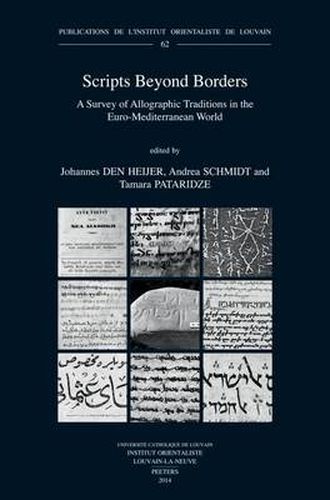Readings Newsletter
Become a Readings Member to make your shopping experience even easier.
Sign in or sign up for free!
You’re not far away from qualifying for FREE standard shipping within Australia
You’ve qualified for FREE standard shipping within Australia
The cart is loading…






This collection of essays deals with the phenomenon of allography, taken
in the sense of the practice of writing a language in the script of
another language. Although by no means all texts highlighted in the
essays are of a religious character, they are written in the scripts
that are connected with the three monotheistic traditions stemming from
the Eastern Mediterranean: Judaism, Christianity and Islam. The time
span covered ranges from Late Antiquity to (early) modern times.
The volume contains studies on such cases as Aljamiado (Romance
languages of Spain written in Arabic or Hebrew script but also Bosnian
in Arabic script), Judaeo-Arabic, karshuni (Arabic but
occasionally also other languages written in Syriac script), and various
combinations of languages written in the Greek, Syriac, Armenian and
Georgian scripts. In each case, the approach is both philological,
concentrating on the various systems of adaptation of the scripts to the
phonetics of the languages in question, and historical, with a focus on
aspects of intercultural contact and exchange, as well as on the
emergence and development of the various allographic traditions over
time. Particularly important questions, discussed in several
contributions, are whether specific communities used scripts of a
language other than their own for practical or rather for ideological,
identity-related considerations, and how these writing practices relate
to the sociocultural contexts in which they functioned and developed.
$9.00 standard shipping within Australia
FREE standard shipping within Australia for orders over $100.00
Express & International shipping calculated at checkout
This collection of essays deals with the phenomenon of allography, taken
in the sense of the practice of writing a language in the script of
another language. Although by no means all texts highlighted in the
essays are of a religious character, they are written in the scripts
that are connected with the three monotheistic traditions stemming from
the Eastern Mediterranean: Judaism, Christianity and Islam. The time
span covered ranges from Late Antiquity to (early) modern times.
The volume contains studies on such cases as Aljamiado (Romance
languages of Spain written in Arabic or Hebrew script but also Bosnian
in Arabic script), Judaeo-Arabic, karshuni (Arabic but
occasionally also other languages written in Syriac script), and various
combinations of languages written in the Greek, Syriac, Armenian and
Georgian scripts. In each case, the approach is both philological,
concentrating on the various systems of adaptation of the scripts to the
phonetics of the languages in question, and historical, with a focus on
aspects of intercultural contact and exchange, as well as on the
emergence and development of the various allographic traditions over
time. Particularly important questions, discussed in several
contributions, are whether specific communities used scripts of a
language other than their own for practical or rather for ideological,
identity-related considerations, and how these writing practices relate
to the sociocultural contexts in which they functioned and developed.